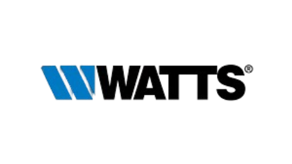Motion Control Market Synopsis
Motion Control Market Size Was Valued at USD 17.09 Billion in 2023, and is Projected to Reach USD 27.44 Billion by 2032, Growing at a CAGR of 5.4% From 2024-2032.
The motion control market refers to the segment of automation technology focused on controlling the movement of machinery and mechanical systems with precision and speed. It includes components like motors, controllers, drives, actuators, and software that work together to regulate movement in applications such as robotics, manufacturing automation, and material handling. Motion control solutions are essential for ensuring smooth, efficient, and accurate operations in industries requiring high precision, such as electronics, aerospace, automotive, and medical devices.
- The global motion control industry is experiencing robust growth, driven by the increasing demand for automation across a wide range of sectors. Industries such as electronics, semiconductors, automotive, and food & beverage are rapidly adopting motion control systems to enhance production efficiency, improve precision, and reduce operational costs.
- Additionally, the rise of smart factories, Industry 4.0 initiatives, and advancements in robotics are propelling the demand for advanced motion control solutions globally. The growing trend of miniaturization in electronics and the increasing complexity of manufacturing processes have further contributed to the market's expansion.
- Regionally, the Asia Pacific market leads in terms of market share, fueled by rapid industrialization and the presence of large manufacturing hubs in countries like China, Japan, and South Korea. North America and Europe also hold significant shares, driven by strong automation demand in automotive and aerospace sectors.
- The continued growth of the motion control industry is expected to be driven by advancements in technology, including AI-driven systems and smart sensors, which enhance the accuracy, efficiency, and flexibility of motion control solutions.
Motion Control Market Trend Analysis
Rising Demand for Industrial Automation
- The key drivers of the global motion control industry is the increasing demand for industrial automation across various sectors. With industries like manufacturing, automotive, and electronics pushing for higher productivity, efficiency, and precision, motion control systems have become critical in automating complex processes. These systems enable machines to execute tasks with minimal human intervention while maintaining accuracy and speed. In manufacturing, for instance, motion control is essential for automating assembly lines, robotic arms, and CNC machines, which improves overall output while reducing errors and labor costs.
- The automotive industry is particularly driving demand for motion control solutions due to the need for high precision in assembly processes. Automakers are increasingly adopting automated systems for tasks such as welding, painting, and component assembly to meet rising production demands and maintain quality standards. Additionally, the rise of electric vehicles (EVs) has accelerated the adoption of motion control systems in battery manufacturing and EV assembly, further fueling market growth.
- Another factor contributing to the rising demand for automation is the adoption of Industry 4.0 technologies. Smart factories that integrate IoT, AI, and data analytics require advanced motion control systems to operate efficiently. These systems not only automate production processes but also enable real-time monitoring, predictive maintenance, and enhanced flexibility, making them indispensable in modern industrial operations.
Opportunity
Growth in Robotics and AI Integration
- A significant opportunity in the global motion control industry lies in the growing integration of robotics and artificial intelligence (AI) into motion control systems. The increasing use of robots across industries such as electronics, healthcare, and logistics has created a demand for highly accurate and responsive motion control solutions. Robots require advanced motion control to perform intricate tasks such as assembly, pick-and-place operations, and material handling with precision. As robotics applications expand, motion control technology will be essential to meet the need for speed, flexibility, and adaptability.
- AI integration into motion control systems presents a transformative opportunity by enabling machines to learn and adapt to changing conditions in real time. AI-driven motion control can optimize performance by analysing data, predicting potential issues, and adjusting autonomously. This reduces downtime, improves accuracy, and enhances productivity, making it a valuable opportunity for manufacturers seeking to improve efficiency in high-demand environments. For instance, AI-powered robots in warehouses can streamline logistics operations by efficiently managing inventory and orders.
- Furthermore, collaborative robots, or cobots, which work alongside humans, are a growing trend in the industry. These robots require advanced motion control systems to ensure safe, precise, and smooth interactions with human workers. As demand for cobots increases in industries like healthcare, electronics, and small-scale manufacturing, the opportunity to develop innovative motion control solutions will expand, positioning the market for long-term growth.
Motion Control Market Segment Analysis:
- Motion Control market is segmented on the basis of Product Type, End-User.
By Type, Motors Segment Is Expected to Dominate the Market During the Forecast Period
- The motors segment is projected to lead the motion control market during the forecast period, driven by its critical role in various industrial applications. Motors are essential components in motion control systems, providing the necessary mechanical movement for automation processes in industries like manufacturing, automotive, and aerospace. The increasing demand for precision, speed, and efficiency in these sectors has further accelerated the adoption of advanced motor technologies such as brushless DC motors and stepper motors.
- The rise in automation and robotics across industries is expected to contribute to the dominance of the motors segment. As industries continue to automate processes to enhance productivity and reduce operational costs, motors play a vital role in powering machinery, robots, and conveyors, fueling growth in this market segment. The ongoing advancements in motor technology, including improvements in energy efficiency and durability, are also key factors propelling the motors segment's strong market position.
By End-User, Electronics and semiconductor Segment Held the Largest Share In 2023
- In 2023, the electronics and semiconductor segment held the largest share of the motion control market, driven by the rapid advancements and high demand for precision in manufacturing processes. This industry heavily relies on motion control systems to achieve accurate positioning, speed control, and efficiency in equipment used for tasks like semiconductor fabrication and electronic component assembly. The increasing complexity of semiconductor devices and the need for high-volume production has further boosted the adoption of advanced motion control solutions in this segment.
- The growing trend of miniaturization in electronics and the rise of new technologies, such as 5G, artificial intelligence, and IoT, have fueled the demand for motion control systems in the electronics and semiconductor industry. These systems enable manufacturers to maintain high precision and performance, ensuring product quality and meeting the evolving technological demands, thereby cementing this segment's dominant position in the market.
Motion Control Market Regional Insights:
Asia Pacific is Expected to Dominate the Market Over the Forecast Period
- The Asia Pacific region is expected to dominate the motion control market over the forecast period, driven by rapid industrialization, advancements in automation, and the presence of key manufacturing hubs. Countries like China, Japan, South Korea, and Taiwan are leading players in industries such as automotive, electronics, semiconductors, and robotics, all of which heavily rely on motion control systems for precision and efficiency. The region's strong focus on adopting advanced automation technologies to improve production capabilities has significantly fueled demand for motion control solutions.
- In China, for instance, the government's "Made in China 2025" initiative aims to elevate the country's manufacturing sector by encouraging the adoption of automation and intelligent manufacturing systems. This has resulted in a surge in demand for motion control technologies to meet the growing requirements of industries such as automotive and electronics. Japan, being a leader in robotics and factory automation, further strengthens the region's dominance in the motion control market, with companies constantly investing in motion control systems to enhance productivity and precision.
- The growing investments in the semiconductor industry across Asia Pacific have propelled the demand for advanced motion control solutions. South Korea and Taiwan, home to major semiconductor manufacturers like Samsung and TSMC, are key players driving the market. As these companies expand production capabilities to meet the rising demand for electronics and IoT devices, the need for precise and efficient motion control systems has increased. The combination of industrial growth, government initiatives, and investment in high-tech industries positions the Asia Pacific region as the dominant force in the global motion control market over the forecast period.
Motion Control Market Active Players
- Siemens AG (Germany)
- Schneider Electric (France)
- Rockwell Automation, Inc. (USA)
- Mitsubishi Electric Corporation (Japan)
- ABB Ltd. (Switzerland)
- Yaskawa Electric Corporation (Japan)
- Bosch Rexroth AG (Germany)
- Parker Hannifin Corporation (USA)
- Omron Corporation (Japan)
- Fanuc Corporation (Japan)
- Kollmorgen Corporation (USA)
- Delta Electronics, Inc. (Taiwan)
- Keyence Corporation (Japan)
- KUKA AG (Germany)
- Danfoss A/S (Denmark)
- Emerson Electric Co. (USA)
- Beckhoff Automation GmbH & Co. KG (Germany)
- Nidec Corporation (Japan)
- Moog Inc. (USA)
- Yamaha Motor Co., Ltd. (Japan)
- Oriental Motor Co., Ltd. (Japan)
- B&R Industrial Automation GmbH (A member of the ABB Group) (Austria)
- Panasonic Corporation (Japan)
- SEW-Eurodrive GmbH & Co KG (Germany)
- Festo Group (Germany) and Other Active Players
Key Industry Developments in the Motion Control Market:
- In August 2023, Siemens introduced the latest servo offering to the manufacturing industry in North America. The SINAMICS servosystem includes a SINAMICS drive and SIMOTICS S-1FL2 motor and is available with flexible or standard cable options. This new product expands the SINAMICS drive offering for different applications to the servo product line. The pulse train variant enables various installed machines to incorporate supplementary positioning axes using the onboard positioner.
- In May 2023, Japan-based Mitsubishi Electric and Korea-based MOVENSYS Inc. announced a partnership to collaborate in their motion control and AC servo businesses. This new partnership aims for Mitsubishi Electric to expand its AC servo enterprise, targeting semiconductor manufacturing equipment and other applications by including Movensys' technologies and product manufacturing capabilities.
- In March 2023, Celera Motion, a business unit of Novanta Inc. launched the Field Calibration IncOder. It is an innovative absolute inductive encoder solution that provides highly accurate angle measurement for motion control applications as well as position feedback in robotics. This encoder is designed to work in harsh environments that are not ideal for optical encoders, such as dirty, dusty, and wet conditions. It can also withstand high shocks and vibrations.
|
Global Motion Control Market |
|||
|
Base Year: |
2023 |
Forecast Period: |
2024-2032 |
|
Historical Data: |
2017 to 2023 |
Market Size in 2023: |
USD 17.09 Bn. |
|
Forecast Period 2024-32 CAGR: |
5.4% |
Market Size in 2032: |
USD 27.44 Bn. |
|
Segments Covered: |
By Product Type |
|
|
|
By End-User |
|
||
|
By Region |
|
||
|
Key Market Drivers: |
|
||
|
Key Market Restraints: |
|
||
|
Key Opportunities: |
|
||
|
Companies Covered in the report: |
|
||
- INTRODUCTION
- RESEARCH OBJECTIVES
- RESEARCH METHODOLOGY
- RESEARCH PROCESS
- SCOPE AND COVERAGE
- Market Definition
- Key Questions Answered
- MARKET SEGMENTATION
- EXECUTIVE SUMMARY
- MARKET OVERVIEW
- GROWTH OPPORTUNITIES BY SEGMENT
- MARKET LANDSCAPE
- PORTER’S FIVE FORCES ANALYSIS
- Bargaining Power of Supplier
- Threat Of New Entrants
- Threat Of Substitutes
- Competitive Rivalry
- Bargaining Power Among Buyers
- INDUSTRY VALUE CHAIN ANALYSIS
- MARKET DYNAMICS
- Drivers
- Restraints
- Opportunities
- Challenges
- MARKET TREND ANALYSIS
- REGULATORY LANDSCAPE
- PESTLE ANALYSIS
- PRICE TREND ANALYSIS
- PATENT ANALYSIS
- TECHNOLOGY EVALUATION
- MARKET IMPACT OF THE RUSSIA-UKRAINE WAR
- Geopolitical Market Disruptions
- Supply Chain Disruptions
- Instability in Emerging Markets
- ECOSYSTEM
- PORTER’S FIVE FORCES ANALYSIS
- MOTION CONTROL MARKET BY PRODUCT TYPE (2017-2032)
- MOTION CONTROL MARKET SNAPSHOT AND GROWTH ENGINE
- MARKET OVERVIEW
- MOTORS
- Introduction And Market Overview
- Historic And Forecasted Market Size in Value (2017-2032F)
- Historic And Forecasted Market Size in Volume (2017-2032F)
- Key Market Trends, Growth Factors and Opportunities
- Geographic Segmentation Analysis
- DRIVES
- POSITION CONTROLS
- ACTUATORS & MECHANICAL SYSTEMS
- SENSORS AND FEEDBACK DEVICES
- MOTION CONTROL MARKET BY END-USER (2017-2032)
- MOTION CONTROL MARKET SNAPSHOT AND GROWTH ENGINE
- MARKET OVERVIEW
- ELECTRONICS & SEMICONDUCTOR
- Introduction And Market Overview
- Historic And Forecasted Market Size in Value (2017-2032F)
- Historic And Forecasted Market Size in Volume (2017-2032F)
- Key Market Trends, Growth Factors And Opportunities
- Geographic Segmentation Analysis
- PHARMACEUTICAL/LIFE SCIENCES/MEDICAL DEVICES
- OIL & GAS
- METAL & MINING
- FOOD & BEVERAGES
- OTHERS
- COMPANY PROFILES AND COMPETITIVE ANALYSIS
- COMPETITIVE LANDSCAPE
- Competitive Benchmarking
- Motion Control Market Share By Manufacturer (2023)
- Industry BCG Matrix
- Heat Map Analysis
- Mergers & Acquisitions
- SIEMENS AG (GERMANY)
- Company Overview
- Key Executives
- Company Snapshot
- Role of the Company in the Market
- Sustainability and Social Responsibility
- Operating Business Segments
- Product Portfolio
- Business Performance (Production Volume, Sales Volume, Sales Margin, Production Capacity, Capacity Utilization Rate)
- Key Strategic Moves And Recent Developments
- SWOT Analysis
- SCHNEIDER ELECTRIC (FRANCE)
- ROCKWELL AUTOMATION, INC. (USA)
- MITSUBISHI ELECTRIC CORPORATION (JAPAN)
- ABB LTD. (SWITZERLAND)
- YASKAWA ELECTRIC CORPORATION (JAPAN)
- BOSCH REXROTH AG (GERMANY)
- PARKER HANNIFIN CORPORATION (USA)
- OMRON CORPORATION (JAPAN)
- FANUC CORPORATION (JAPAN)
- KOLLMORGEN CORPORATION (USA)
- DELTA ELECTRONICS, INC. (TAIWAN)
- KEYENCE CORPORATION (JAPAN)
- KUKA AG (GERMANY)
- DANFOSS A/S (DENMARK)
- EMERSON ELECTRIC CO. (USA)
- BECKHOFF AUTOMATION GMBH & CO. KG (GERMANY)
- NIDEC CORPORATION (JAPAN)
- MOOG INC. (USA)
- YAMAHA MOTOR CO., LTD. (JAPAN)
- ORIENTAL MOTOR CO., LTD. (JAPAN)
- B&R INDUSTRIAL AUTOMATION GMBH (A MEMBER OF THE ABB GROUP) (AUSTRIA)
- PANASONIC CORPORATION (JAPAN)
- SEW-EURODRIVE GMBH & CO KG (GERMANY)
- FESTO GROUP (GERMANY)
- COMPETITIVE LANDSCAPE
- GLOBAL MOTION CONTROL MARKET BY REGION
- OVERVIEW
- NORTH AMERICA
- Key Market Trends, Growth Factors And Opportunities
- Key Manufacturers
- Historic And Forecasted Market Size By Product Type
- Historic And Forecasted Market Size By End-User
- Historic And Forecasted Market Size By Country
- USA
- Canada
- Mexico
- EASTERN EUROPE
- Key Market Trends, Growth Factors And Opportunities
- Key Manufacturers
- Historic And Forecasted Market Size By Segments
- Historic And Forecasted Market Size By Country
- Russia
- Bulgaria
- The Czech Republic
- Hungary
- Poland
- Romania
- Rest Of Eastern Europe
- WESTERN EUROPE
- Key Market Trends, Growth Factors And Opportunities
- Key Manufacturers
- Historic And Forecasted Market Size By Segments
- Historic And Forecasted Market Size By Country
- Germany
- United Kingdom
- France
- The Netherlands
- Italy
- Spain
- Rest Of Western Europe
- ASIA PACIFIC
- Key Market Trends, Growth Factors And Opportunities
- Key Manufacturers
- Historic And Forecasted Market Size By Segments
- Historic And Forecasted Market Size By Country
- China
- India
- Japan
- South Korea
- Malaysia
- Thailand
- Vietnam
- The Philippines
- Australia
- New-Zealand
- Rest Of APAC
- MIDDLE EAST & AFRICA
- Key Market Trends, Growth Factors And Opportunities
- Key Manufacturers
- Historic And Forecasted Market Size By Segments
- Historic And Forecasted Market Size By Country
- Turkey
- Bahrain
- Kuwait
- Saudi Arabia
- Qatar
- UAE
- Israel
- South Africa
- SOUTH AMERICA
- Key Market Trends, Growth Factors And Opportunities
- Key Manufacturers
- Historic And Forecasted Market Size By Segments
- Historic And Forecasted Market Size By Country
- Brazil
- Argentina
- Rest of South America
- INVESTMENT ANALYSIS
- ANALYST VIEWPOINT AND CONCLUSION
- Recommendations and Concluding Analysis
- Potential Market Strategies
|
Global Motion Control Market |
|||
|
Base Year: |
2023 |
Forecast Period: |
2024-2032 |
|
Historical Data: |
2017 to 2023 |
Market Size in 2023: |
USD 17.09 Bn. |
|
Forecast Period 2024-32 CAGR: |
5.4% |
Market Size in 2032: |
USD 27.44 Bn. |
|
Segments Covered: |
By Product Type |
|
|
|
By End-User |
|
||
|
By Region |
|
||
|
Key Market Drivers: |
|
||
|
Key Market Restraints: |
|
||
|
Key Opportunities: |
|
||
|
Companies Covered in the report: |
|
||
Frequently Asked Questions :
The forecast period in the Motion Control Market research report is 2024-2032.
Siemens AG (Germany),Schneider Electric (France),Rockwell Automation, Inc. (USA),Mitsubishi Electric Corporation (Japan),ABB Ltd. (Switzerland),Yaskawa Electric Corporation (Japan),Bosch Rexroth AG (Germany),Parker Hannifin Corporation (USA),Omron Corporation (Japan),Fanuc Corporation (Japan),Kollmorgen Corporation (USA),Delta Electronics, Inc. (Taiwan),Keyence Corporation (Japan),KUKA AG (Germany),Danfoss A/S (Denmark),Emerson Electric Co. (USA),Beckhoff Automation GmbH & Co. KG (Germany),Nidec Corporation (Japan),Moog Inc. (USA),Yamaha Motor Co., Ltd. (Japan),Oriental Motor Co., Ltd. (Japan),B&R Industrial Automation GmbH (A member of the ABB Group) (Austria),Panasonic Corporation (Japan),SEW-Eurodrive GmbH & Co KG (Germany),Festo Group (Germany) and Other Active Players.
The Motion Control Market is segmented into Product Type, End-User, and region. By Product Type, the market is categorized into Motors, Drives, Position Controls, Actuators & Mechanical Systems, Sensors and Feedback Devices. By End-User, the market is categorized into Electronics & Semiconductor, Pharmaceutical/Life Sciences/Medical Devices, Oil & Gas, Metal & Mining, Food & Beverages, And Others. By region, it is analyzed across North America (U.S.; Canada; Mexico), Eastern Europe (Bulgaria; The Czech Republic; Hungary; Poland; Romania; Rest of Eastern Europe), Western Europe (Germany; UK; France; Netherlands; Italy; Russia; Spain; Rest of Western Europe), Asia-Pacific (China; India; Japan; Southeast Asia, etc.), South America (Brazil; Argentina, etc.), Middle East & Africa (Saudi Arabia; South Africa, etc.).
The motion control market envelops the improvement, generation, and conveyance of innovations that direct the development and situating of apparatus and mechanical components, which are basic for mechanizing mechanical forms.
Motion Control Market Size Was Valued at USD 17.09 Billion in 2023, and is Projected to Reach USD 27.44 Billion by 2032, Growing at a CAGR of 5.4% From 2024-2032.






















